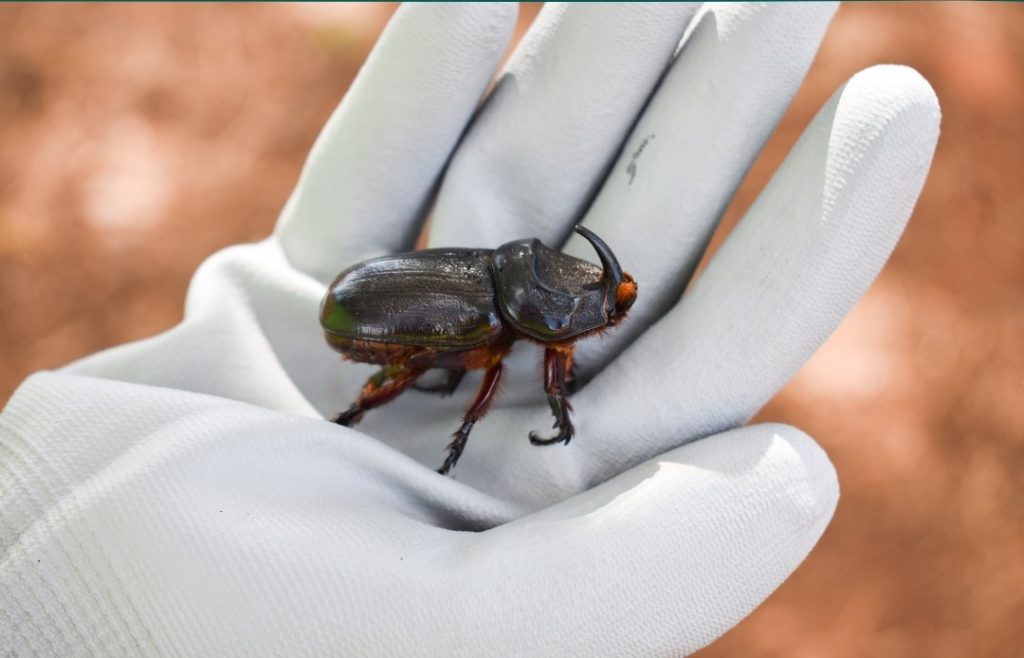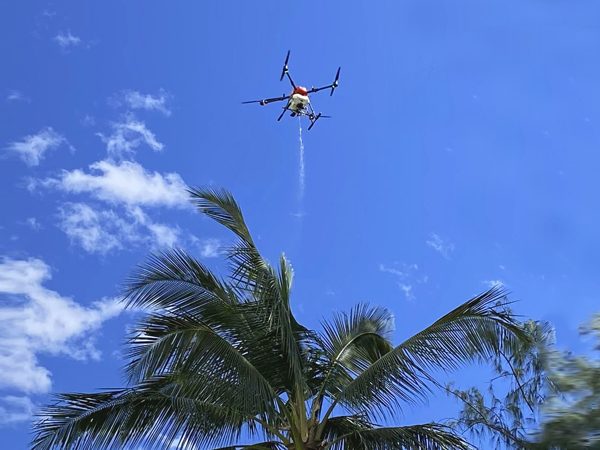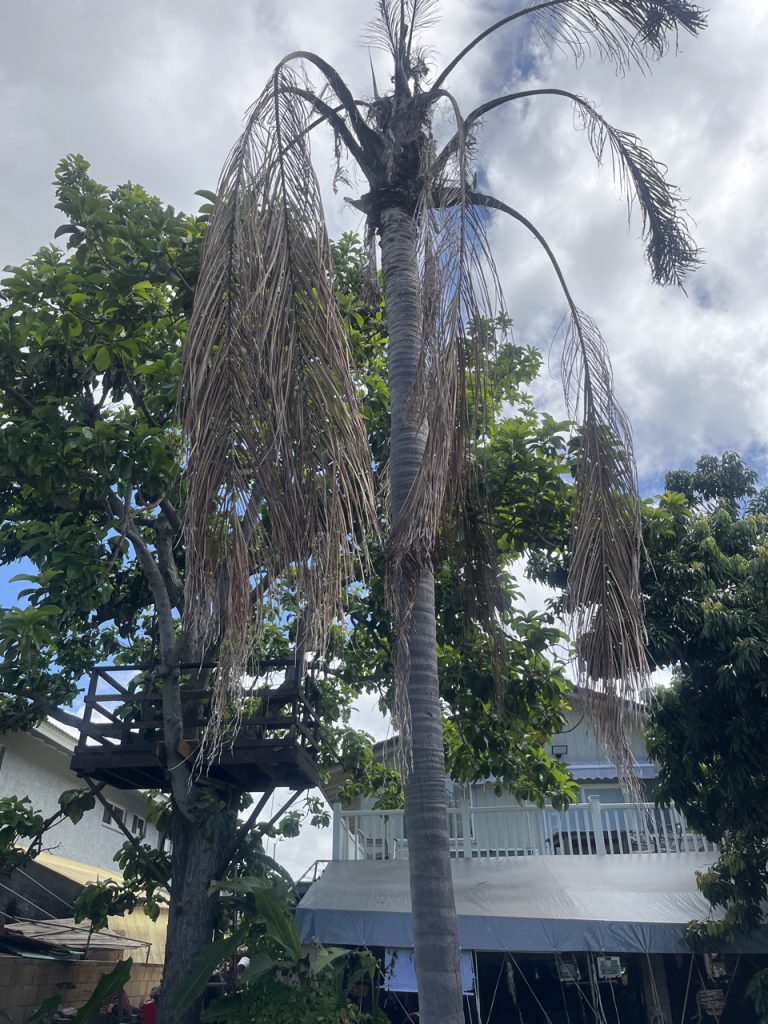About the CRB
The Coconut Rhinoceros Beetle (CRB), a serious invasive pest, was first detected on December 2013, on coconut trees at Joint Base Pearl Harbor – Hickam (JBPH-H). The first discovery was an accidential find in a Red palm Weevil trap set by the USDA. It is not known how the beetles arrived in Hawaii.
Origin and Distribution
The CRB is native to the Asian tropics and has been accidentally introduced to western and central Pacific islands. It is a major pest of palms in countries and islands including India, the Philippines, the Palaus, Fiji, Wallis, Nukunono, American and Western Samoa, and Guam. It is not known exactly how the beetles arrived in Hawai‘i.


Description and Damage
- Adult CRB are dark brown to black and measure 1.5 to 2.5 inches long.
- CRB larva(grubs) are white with a brown head. They measure .25 to 2.5 inches long.
- The adult beetle is primarily a pest of coconut, but may also attack other palm species such as Royal and indiginous Loulou (fan) palms.
- They cause damage by boring into the center of the crown, injuring young, growing tissue and feeding on sap.
- This boring cuts through developing leaves. As the damaged leaves mature and unfold, telltale signs include V-shaped cuts in the fronds and holes through the midrib.
- Grubs can be found in decaying organic matter such as mulch and greenwaste.
Report Suspected CRB
If you suspect CRB on coconut or palm plants on ANY island, it must be reported immediately.
Call HDOA’s PEST HOTLINESpread in Hawai‘i
Following its initial detection at JBPH-H, CRB have been found in other areas on O‘ahu:
Barbers Point (May 2014)
Campbell Industrial Park (July 2014)
Diamond Head (October 2014)
The Response
Since the initial detection, a joint effort has been mobilized for surveying, trapping, and control efforts. This collaboration includes the U.S. Department of Agriculture (USDA), the University of Hawaii Manoa (UH), the U.S. Navy, the Hawaii Department of Agriculture and Bioceurity (HDAB), and other partners such as th eInvasive species committees.

Report Suspected CRB
If you suspect CRB on coconut or palm plants on ANY island, it should be reported immediately.
Best Management Practices (BMPs) for CRB Host Materials
Residents and businesses can take the following steps to minimize the risk of spreading CRB. “CRB host materials” refer to materials like green waste, mulch, and compost that the beetle uses for breeding.
Inspect and Report
– Inspect CRB host materials (especially finished compost) and nearby host palms for signs of CRB or damage at least every four months.
– Examine incoming materials before accepting them to ensure they are not infested.
– Collect any suspected CRB and report findings or visible damage to HDAB at (808) 643-PEST (7378) or the Big Island Invasive Species Committee (BIISC) at (808) 933-3340.
If you need assistance with inspection, contact BIISC, CRB Response (808-679-5244), or HDAB.
Properly Manage Materials
– Chip incoming CRB host materials within 48 hours.
– Properly compost CRB host materials by heating piles to at least 131 degrees Fahrenheit.
– Monitor finished materials at least every 4 months (visual during turnover). Once compost cools to around 110 degrees Fahrenheit, it can be infested and is a good breeding material for CRB.
– Do not stockpile or keep a mound of CRB host material. Routinely distribute it around plants or thinly spread it up to 4 inches in depth to enable it to dry completely.
Prevent the Spread
– Utilize or process CRB host materials already on-site for end use. This eliminates the need to move potentially infested materials off your property.
– Safeguard properly composted or treated materials in completely sealed containers that prevent CRB entry. Acceptable materials include metal, concrete, or glass—CRB can chew through many plastics.
– Ensure CRB host materials are still at acceptable temperatures or have been subjected to an effective treatment before being transported off-site.
– Fumigation with Profume (a restricted use pesticide) is one option for treating certain materials, such as compost. Call HDAB for additional information.
– Ask suppliers of CRB host materials to provide documentation of their CRB prevention efforts and ensure the materials come from a reputable source that follows CRB BMPs.
